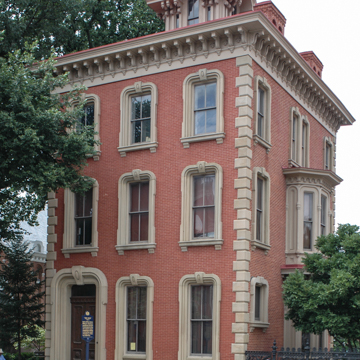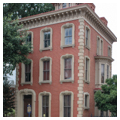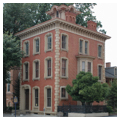Unquestionably the gem of York's city houses, the richly sculptural detail of the main facade, from the bold quoins at the corners and window surrounds to the massive bracketed cornice, suggests an urban architect of Stephen Button's stature—or perhaps better. Frescoes on the first-floor ceilings are the work of Costagini and Scataglia, who also worked in the 1860s house of David Small at 153 E. Market Street, and at the U.S. Capitol. Charles Billmeyer and his partner, Small, manufactured railway cars, another link to the railroad corporations that would have connected them to Button.
You are here
Charles Billmeyer House
If SAH Archipedia has been useful to you, please consider supporting it.
SAH Archipedia tells the story of the United States through its buildings, landscapes, and cities. This freely available resource empowers the public with authoritative knowledge that deepens their understanding and appreciation of the built environment. But the Society of Architectural Historians, which created SAH Archipedia with University of Virginia Press, needs your support to maintain the high-caliber research, writing, photography, cartography, editing, design, and programming that make SAH Archipedia a trusted online resource available to all who value the history of place, heritage tourism, and learning.





